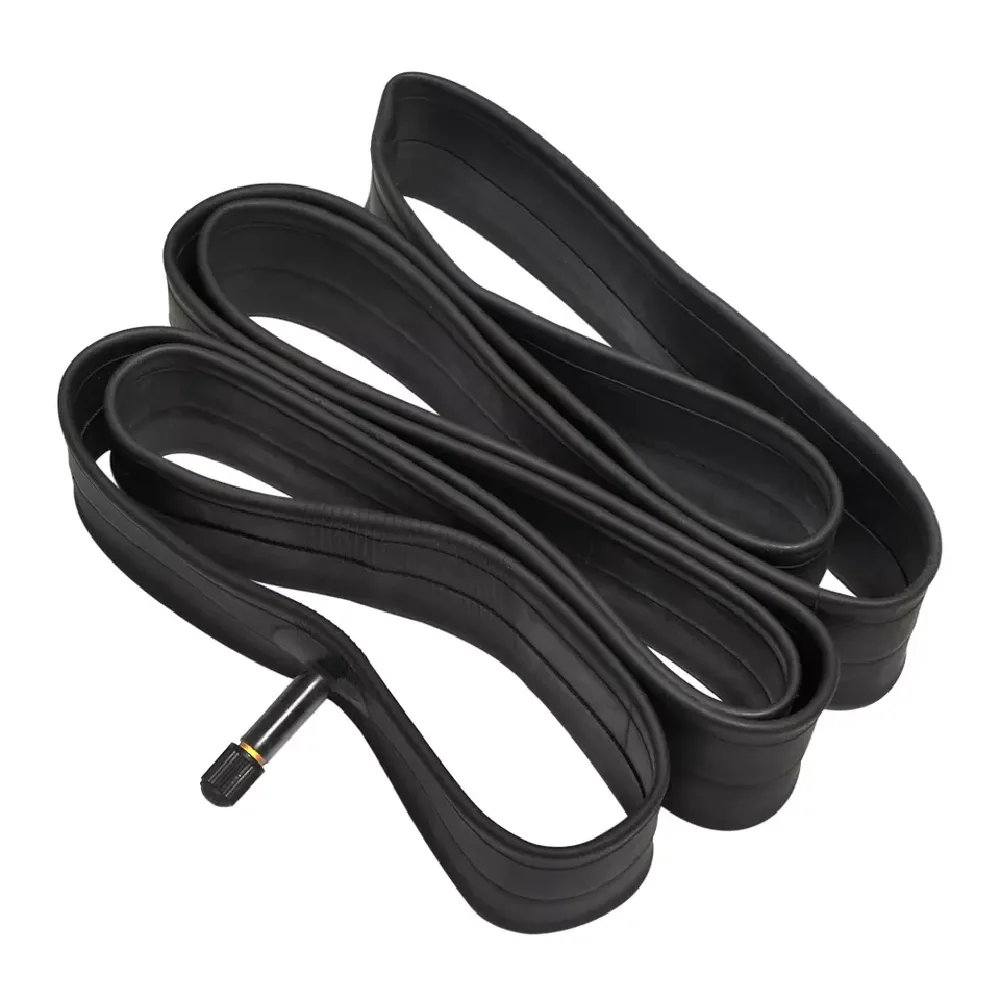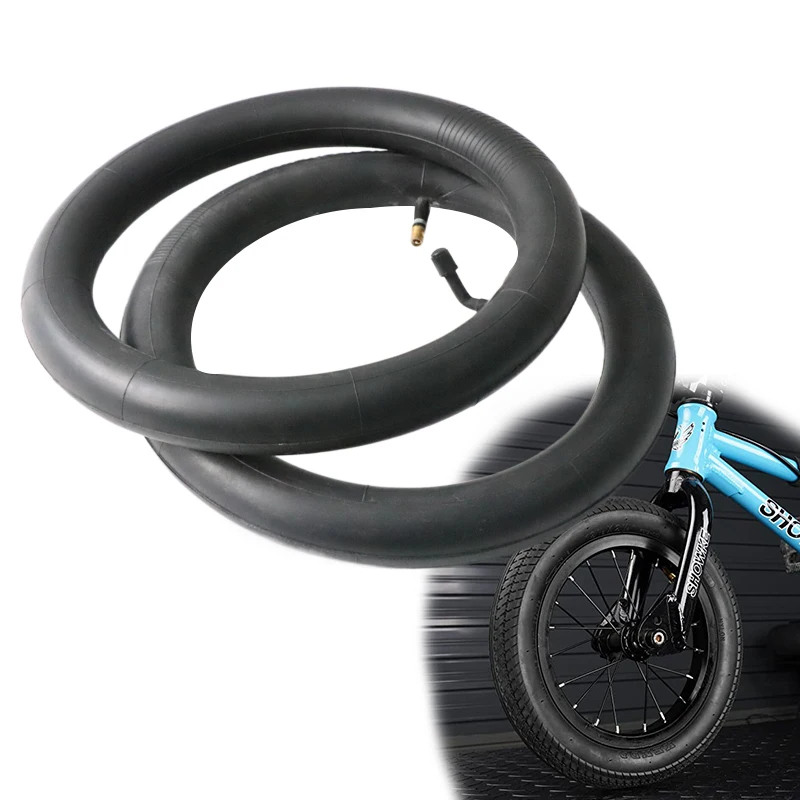Fahrradreifen können in drei Hauptkategorien unterteilt werden: Klincher, Tubeless und Tubular, wobei jeder Typ eine einzigartige Bauweise und Leistungsmerkmale bietet, die sich an unterschiedliche Bedürfnisse des Radfahrens richten. Klinchertreifen sind der am häufigsten verwendete Typ in modernen Fahrrädern. Sie bestehen aus einer äußeren Hülle, die ein Innenfeder enthält, was sie einfach zu wechseln und zu reparieren macht. Diese benutzerfreundliche Konstruktion ist besonders für gelegentliche Radfahrer und solche interessant, die bei der Reifenwartung auf Bequemlichkeit Wert legen.
Tubelesstreifen hingegen machen das Innenfeder-System überflüssig. Sie bieten Vorteile wie geringeren Rollwiderstand und weniger Platzen, was sie bei Mountainbikern und Straßencyclisten beliebt macht, die auf Leistung und Haltbarkeit setzen. Dieser Reifentyp passt enger am Speichenrad auf, was zu einem besseren Grip und einem gleichmäßigeren Fahrgefühl führt, insbesondere vorteilhaft bei Geländefahrt.
Klebereifen werden um das Innertube genäht und auf den Speichenrand geklebt, eine Eigenschaft, die ein leichtes und gleichmäßiges Fahrverhalten bietet, das ideal für professionelles Straßenrennfahren ist. Diese Fahrradreifen werden hauptsächlich in Wettbewerbs Situationen eingesetzt, wo jedes Gramm Gewicht eine Rolle spielt und maximale Geschwindigkeit entscheidend ist. Das Verständnis der Unterschiede zwischen diesen Reifentypen kann sich erheblich auf Ihre Radfahrleistung und Komfort auswirken und zu einer besseren Sicherheit auf der Straße führen. Die richtige Reifenwahl verbessert nicht nur Ihr Fahrerlebnis, sondern passt sich auch an spezifische Geländebedingungen und Nutzungsszenarien an, was eine sicherere Fahrt gewährleistet.
Zu wissen, wann man die Reifen des Fahrrads wechseln muss, ist entscheidend, um unerwartete Panne zu verhindern und eine sichere Fahrt zu gewährleisten. Anzeichen, die darauf hinweisen, dass ein Austausch fällig ist, sind Profilverschleiß, Schäden an der Seitenwand oder häufige Pannen. Die regelmäßige Überwachung dieser Faktoren kann helfen, plötzliche Reifen defekte während der Fahrt zu vermeiden.
Die richtige Auswahl der Reifengröße für dein Fahrrad ist essenziell und erfordert das Verständnis der Spezifikationen deiner aktuellen Reifen. In der Regel in Zoll oder Millimetern ausgedrückt, beinhalten diese Zahlen Reifenbreite und -durchmesser, die entscheidend für einen passenden Sitz sind. Die Sicherstellung der Kompatibilität mit dem Typ deines Fahrrads ist von großer Bedeutung, da verschiedene Arten von Fahrrädern – wie Mountainbike, Rennrad oder Hybridmodelle – unterschiedliche Reifenanforderungen haben, die sich erheblich auf Leistung und Fahrverhalten auswirken.
Die Auswahl der passenden Tube- und Ventilgrößen ist eine weitere wichtige Überlegung. Die zwei gebräuchlichsten Ventilarten sind Schrader und Presta, die unterschiedliche Funktionen in Bezug auf Luftdichte und Bequemlichkeit beim Aufpumpen haben. Die Wahl des richtigen Passformates kann die Leistung deines Fahrrads verbessern und Wartungsprobleme reduzieren.
Für weitere Anleitung können lokale Fahrradshops konsultiert oder Online-Ressourcen genutzt werden, um den Entscheidungsprozess bei der Auswahl von Ersatzteilen zu verbessern. Diese Strategien stellen sicher, dass Sie eine optimale Fahrradleistung und Sicherheit beim Radfahren aufrechterhalten. Durch das Folgen dieser Schritte können Sie selbstbewusst die passenden Fahrradreifen auswählen und eine glatte und problemfreie Fahrt genießen.
Das Reifenschliffmuster ist ein entscheidender Faktor, der den Grip, das Handling und den Rollwiderstand beeinflusst. Verschiedene Schliffprofile sind darauf ausgelegt, spezifischen Bedingungen gerecht zu werden. Zum Beispiel sind glatte Reifen ideal für das Radfahren auf der Straße wegen ihres geringen Rollwiderstands, während knubbelige Reifen gut für Gelände geeignet sind, da sie auf rauen Untergründen einen verbesserten Grip bieten. Die Auswahl des richtigen Schliffmusters für Ihre Radumgebung kann die Radfahrerfahrung erheblich verbessern und Sicherheit gewährleisten.
Der Rollwiderstand wird vor allem durch das Reifematerial und den Profilierungseinfluss bestimmt. Reifen mit geringerem Rollwiderstand können die Geschwindigkeitseffizienz steigern, es ist jedoch wichtig, ausreichenden Grip zu gewährleisten, um Sicherheit und Kontrolle zu sichern. Obwohl glatte Reifen weniger Widerstand bieten und mehr Geschwindigkeit ermöglichen, können sie den Grip auf glatten Oberflächen beeinträchtigen. Daher ist ein Gleichgewicht zwischen Geschwindigkeit und Grip entscheidend, insbesondere bei der Berücksichtigung von Sicherheit in unterschiedlichen Fahrbedingungen.
Radfahrer müssen oft varying Bedingungen gegenüberstehen, und Faktoren wie Gelände, Wetter und Oberflächentyp spielen eine wichtige Rolle bei der Bestimmung der Reifenleistung und Sicherheit. Zum Beispiel erfordern nasse oder eisige Oberflächen Reifen, die eine hervorragende Wasserverschwendung und Haftung bieten, während trockene und felsige Wege Reifen mit robuster Haltbarkeit und Grip verlangen. Regelmäßige Prüfungen des Reifenziestands sind essenziell, um Verschleiß und Leistungsprobleme zu behandeln und optimale Ergebnisse auf verschiedenen Oberflächen sicherzustellen.
Forschungen von Radfahrerorganisationen deuten darauf hin, dass eine richtige Reifenwahl die Fahr Effizienz erheblich verbessern und Unfallrisiken reduzieren kann. Studien zeigen, dass die richtige Kombination aus Profildesign und Material die Leistung steigern kann, während gleichzeitig sichergestellt wird, dass Radfahrer während ihrer Fahrten sicher sind. Solche Ergebnisse betonen die Bedeutung der Auswahl geeigneter Fahrradreifen, um sie mit individuellen Fahrstilen und Umweltbedingungen in Einklang zu bringen.
Die Wahl der richtigen Reifen dreht sich nicht nur um die Fahrzeugkompatibilität, sondern auch darum, das Gesamterlebnis des Radfahrens zu verbessern. Durch Berücksichtigung der Reifentreadmuster, Rollwiderstand und Umweltbedingungen können Radfahrer Reifen auswählen, die bestmöglich ihren Leistungsanforderungen und Sicherheitsbedürfnissen entsprechen.
Regelmäßige Wartung ist entscheidend für die Haltbarkeit und Leistung von Fahrradreifen. Beginnen Sie mit regelmäßigen Inspektionen auf Verschleißerscheinungen wie Risse, Beulen und dem Überprüfen der Profiltiefe. Diese Untersuchungen können helfen, potenzielle Probleme frühzeitig zu erkennen, bevor sie ernsthaft werden und zu gefährlichen Situationen führen. Wie erfahrenen Radfahrern bestätigt, kann sorgfältige Wartung die Fahrsicherheit erheblich verbessern.
Korrekte Aufblasotechniken sind essenziell für die Pflege von Fahrradreifen, da falscher Druck zu Problemen führen kann. Unterdruckierte Reifen erhöhen die Wahrscheinlichkeit von Knicken platt, während überdruckierte Reifen platzen können, was die Sicherheit gefährdet. Daher ist es wichtig, den Reifendruck regelmäßig zu überprüfen und gegebenenfalls anzupassen, um eine sichere und effiziente Fahrt zu gewährleisten. Laut Fachleuten im Bereich Radfahren verlängert die Einhaltung des richtigen Reifendrucks nicht nur die Lebensdauer, sondern hebt auch die Performance.
Ein weiterer entscheidender Aspekt der Reifenerhaltung besteht darin, geeignete Lagerbedingungen sicherzustellen. Reifen sollten vor direktem Sonnenlicht und extremen Temperaturen geschützt werden, um Materialschäden zu vermeiden. Eine Belastung durch harte Umwelteinflüsse kann die Zusammensetzung der Reifen schwächen und zu vorzeitiger Verschleiß und potenziellen Fehlern führen. Durch das Lagern von Reifen in einem kühlen, trockenen Ort können Radfahrer ihre Lebensdauer erheblich verlängern.
Saisonale Wartungsanpassungen sollten ebenfalls nicht außer Acht gelassen werden. Zum Beispiel den Wechsel zu Winterreifen in den kalten Monaten kann die Fahrleistung auf eisigen Straßen verbessern. Solche proaktiven Maßnahmen bei der Reifenpflege können Radfahrern teure Austausch kosten ersparen und die allgemeine Sicherheit während ihrer Fahrten erhöhen. Durch Beachtung dieser Wartungstipps wird sichergestellt, dass Sie eine glattere und sicherere Radfahrerfahrung haben.
Bei der Suche nach einem Ersatzreifen für Fahrräder hebt sich der Ridefixing EU Warehouse Electric Snow Bike 20-Zoll-Innere Tube als eine ausgezeichnete Wahl für Winterentdecker hervor. Speziell für 20-Zoll-Fat-Bikes entwickelt, wird dieser Innere Tube aus hochwertigem Gummi hergestellt, um Zuverlässigkeit auf schneebedeckten Geländen zu bieten und effektive Stoßdämpfung zu gewährleisten.

Für diejenigen, die sich mit BMX und anderen rauen Geländen beschäftigen, stellt die Ridefixing Factory Sales BMX 12*2.125 Mountain Bike Rollstuhl-Innere Tube eine hervorragende Haltbarkeit und Kompatibilität sicher. Sie verfügt über ein Drainagetexturdesign, das die Leistung in anspruchsvollen Umgebungen verbessert und einen glatteren Ritt für Ihr Mongoose M350 und ähnliche Modelle gewährleistet.

Für Elektrofahrräder bietet die Ridefixing Professional Elektrofahrradkammer eine konsistente Leistung durch ihre robuste Konstruktion und slip-resistant Features. Sie ist eine hervorragende Wahl für Elektrofahrradfahrer, bietet erhöhte Haltbarkeit und effektive Schalldämpfung für 24-Zoll Modelle.


© Copyright 2024 Shenzhen New Image technology Co., Ltd All Rights Reserved Privacy policy